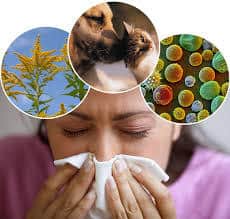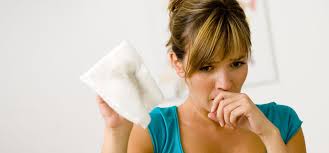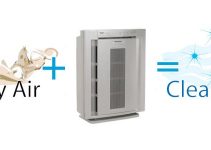Winter is characterized by dry cold air; this can cause allergy symptoms, cause people to be miserable, and may even lead to a number of visits to the hospital every year. I once suffered from both indoor and outdoor allergies. During this time, I discovered that preventive measures were one of the best ways to manage my allergies. However, each day comes with uncertainty. I do forget my daily medication, particularly when am not experiencing symptoms. Read on to learn how to help minimize your allergy symptoms and the symptoms of those around you. Remember that these solutions should never take the place of advice from your doctor. Always follow medical advice from your doctor.

What is an Allergy?
An allergy is the body’s immune system reaction to a stimulus. The stimulus kicks off a series of responses and causes the body to see allergens as invaders or foreign objects. It then causes the immune system to respond to the allergen. Immediately after the body responds to the allergen, you will start feeling allergy symptoms. The symptoms of allergies can vary from mild to life-threatening, depending on the type and quantity of the allergen. Antibodies are then produced by your immune system. The antibodies created cause the basophils and mast cells to release chemicals called histamines to fight the allergen. Usually, this is the time you’ll start feeling your allergy symptoms in your throat, nose, lungs, skin, eyes or gastric intestine tract. Whenever your body is exposed to the allergen, your immune system will continue to bring about an allergic response.
Here is a common list of allergy symptoms:
- Congestion.
- Wheezing.
- Coughing.
- Watery eyes.
- Itchy eyes.
- Sneezing.
- Itchy throat.
- Fatigue.
- Sinus pain.
If you are having an allergy attack, treat the attack immediately to prevent it from getting worse. Allergies are sometimes genetic. If you suffer from allergies, it’s possible you inherited it from your parents.
Common Allergy Triggers
- Pets.
- Cockroaches.
- Dust mites.
- Pollen.
- Mold.
- Foods.
Here is a common list of allergy triggers:
1.Pet allergy
 A lot of allergies can be caused by warm-blooded animals. The pet dander and saliva are usually what people are allergic to. They shed fur and tiny flakes of skin. While using its tongue to clean its body, the protein that is present in their saliva gets dried up into animal fur and can get into your home fabrics. They also go outdoors to play. They can carry allergens in the grass, weeds, and dirt back into your home. It’s imperative that you clean up any pet mess right away. Urine that is not cleaned up will eventually turn airborne and inject bacteria into your home atmosphere.
A lot of allergies can be caused by warm-blooded animals. The pet dander and saliva are usually what people are allergic to. They shed fur and tiny flakes of skin. While using its tongue to clean its body, the protein that is present in their saliva gets dried up into animal fur and can get into your home fabrics. They also go outdoors to play. They can carry allergens in the grass, weeds, and dirt back into your home. It’s imperative that you clean up any pet mess right away. Urine that is not cleaned up will eventually turn airborne and inject bacteria into your home atmosphere.
2. Cockroaches
 Many people will deny that they have a cockroach problem because of the stigma that it carries. Nevertheless, roach infestations can break into even the cleanest homes. If you find a cockroach in your house, you need to treat the problem right away, especially because you don’t yet know the extent of the infestation. They have the habit of hiding in walls, cracks, dark places, and damp spots. Cockroaches release proteins that activate allergy symptoms.
Many people will deny that they have a cockroach problem because of the stigma that it carries. Nevertheless, roach infestations can break into even the cleanest homes. If you find a cockroach in your house, you need to treat the problem right away, especially because you don’t yet know the extent of the infestation. They have the habit of hiding in walls, cracks, dark places, and damp spots. Cockroaches release proteins that activate allergy symptoms.
3. Dust Mites
 Many common indoor allergies are caused by dust mites. They are tiny, microscopic insects that usually live around us. Dust mites feed on our dead skin cells that come off from our bodies. They can be seen in your upholstery, bedding, and on carpets. If you happen to be experiencing indoor allergies, washing your bedding might help lessen the number of dust mites dwelling in your home. If you are suffering serious allergies or asthma, it may be best to remove the carpet in your house and encase all mattresses properly.
Many common indoor allergies are caused by dust mites. They are tiny, microscopic insects that usually live around us. Dust mites feed on our dead skin cells that come off from our bodies. They can be seen in your upholstery, bedding, and on carpets. If you happen to be experiencing indoor allergies, washing your bedding might help lessen the number of dust mites dwelling in your home. If you are suffering serious allergies or asthma, it may be best to remove the carpet in your house and encase all mattresses properly.
4. Mold
Along with dust mites, mold is also often most responsible for many allergic reactions. Fungi can survive both indoors and outdoors in warm, moist environments. If you are among those who are allergic to mold, try checking the following places for mold: bathrooms, under sinks, clothes hamper (especially if you toss in wet clothes and let them sit for a few days), laundry room, and basement. Quickly clean up any mold growth or call a professional to handle the problem before it becomes more widespread. Also, check outside your home and take notice of any mold growth. Poor drainage around your air-conditioning drain, composite piles, and rotten grass can become hotspots for mold growth.
5. Pollen
 This is also a common perpetrator of allergies for many people. It is commonly known as hay fever. Pollen allergens are normally caused by grasses, weeds, and trees that free tiny molecules into the air. The molecules are responsible for contaminating other particles. These outdoor allergens can be seasonal or year-round, depending on where you live. You can find out about local pollen cycles on the news or by visiting Weather Resource Allergy Center.
This is also a common perpetrator of allergies for many people. It is commonly known as hay fever. Pollen allergens are normally caused by grasses, weeds, and trees that free tiny molecules into the air. The molecules are responsible for contaminating other particles. These outdoor allergens can be seasonal or year-round, depending on where you live. You can find out about local pollen cycles on the news or by visiting Weather Resource Allergy Center.
6. Food allergies
There are various food products that can result in allergy attacks. Some of these foods include fish, shellfish, eggs, milk, soy, peanuts, and wheat. Depending on the foods you are allergic to, you should be sure to exclude them from your meals.
How to Prevent Allergies
1. Antihistamines
These can help prevent or treat allergy symptoms. These medicines work by stopping the histamine. Different antihistamines are available in local medical stores or pharmacies, and all have different side effects. Here are common over-the-counter medications used to treat allergy symptoms:
- Claritin
- Benadryl
- Actifed
- Zyrtec
- Allegra
Plus many others that are prescribed by your doctor.
Here are some notable side effects of antihistamines: dry mouth, drowsiness, dizziness, blurred vision, and others. Be sure to read the side effects printed on the medication bottle for the drug you are currently taken. Always consult with your doctor before taking or changing a medication, as some medications are not appropriate for certain people.
2. Reduce Exposure to Allergens
You may also try to avoid exposure to the types of things that aggravate your allergies.
3. Keep pets out of the bedrooms.
- Use hot water to wash bedding on a weekly schedule.
- Encase all pillows and mattresses to lessen the number of dust mites, especially in your bedroom.
- Rip out the carpet and replace it with laminate or hardwood flooring.
- Avoid opening your windows and make use of an air conditioner instead.
- Use curtains that you can easily wash.
- Look for furniture that offers easy cleaning. For example, buy leather instead of fabric.
- Bathe pets weekly.
- Immediately clean up any signs of mold.
- Wash your dishes on a daily basis.
Do not leave laundry to sit for hours in your washing machine. Your laundry can grow mildew while sitting in the washer.
- Stay clear of wood-burning fires during winter time.
- Avoid wood-burning fireplaces during the winter time.
- Fix up any leaking water pipes quickly to prevent the growth of mold.
4. Purchase an air purifier
Those suffering from allergies, asthma, or other respiratory problems often use air purifiers to serve as the first line of defense. They can help remove allergens from the air. They also help remove airborne molecules from your air that can cause discomfort. Most of these units help people suffering from allergies. They can lessen the amount of pet dander, dust mites, dirt, and remove other harmful odors from your home.
The cold winter air can also cause allergies and may result in various health problems including nasal congestion and sneezing. Discover the best whole house humidifier to help start getting rid of indoor allergens by humidifying your home air.
If you like this write up on how to treat allergies and believe it might be helpful to others, share this post with friends and family members.



